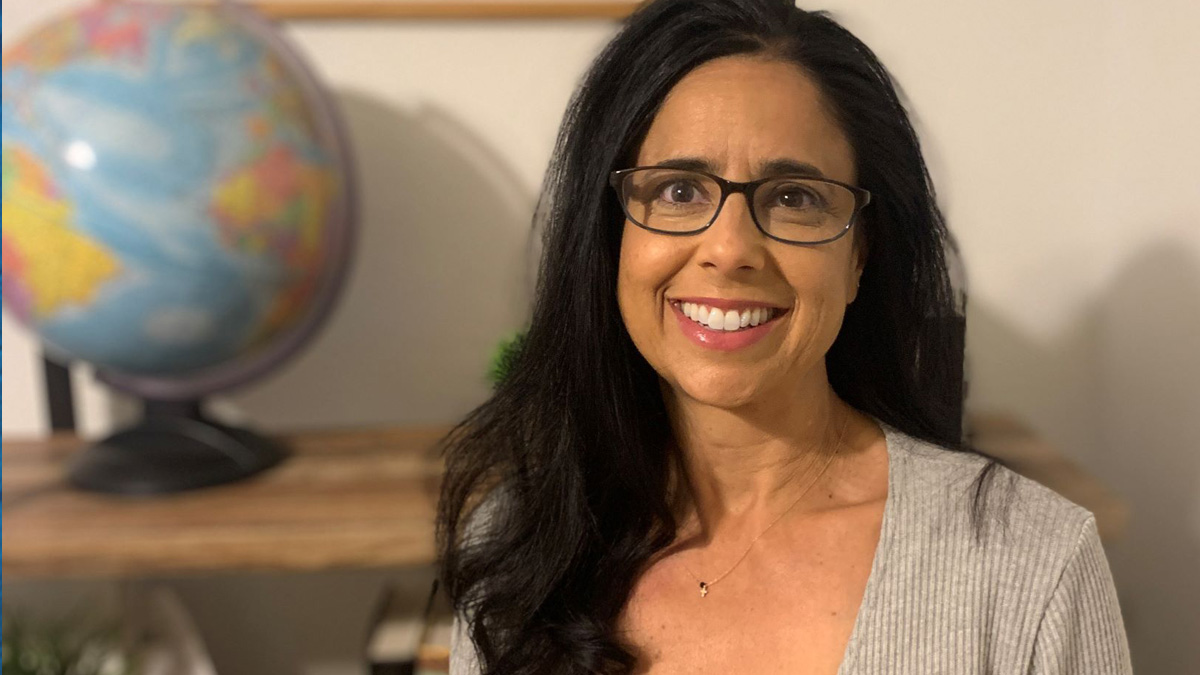It was in the Land of Enchantment where Katina Lambros became fully enchanted with the field of school psychology. In the early 2000s, Lambros worked with Indigenous and Native American communities in Albuquerque-area Head Start settings. While implementing self-determination curricula for students showing early signs of emotional and behavioral challenges, she realized how much she still needed to learn.
“I remember thinking, ‘We'll just be able to go in there and implement this really great research-based curriculum,’” Lambros recalls. “Then I’d realize that they only had one textbook in the entire classroom, or that they lacked consistent educational staff. When you're faced with the barriers, the inequities and the access issues that are present in everyday school settings, it changes your perspective.”
A Las Vegas native who first came to San Diego State University as a psychology undergrad in 1989, Lambros’ journey to deepen her impact eventually brought her back to San Diego.
She spent three years working a caseload as a school psychologist in the San Diego Unified School District and a decade as a researcher in the
Child and Adolescent Services Research Center (CASRC). In 2008, she brought her accumulated expertise to bear training future school psychologists as a tenure-track faculty member in SDSU’s Department of Counseling and School Psychology.
Now an associate professor, she has spent the past five years directing SDSU’s
school psychology program. Lambros also co-leads
Project BEAMS alongside
Bonnie Kraemer, associate professor of special education. The federally-funded project ensures school psychology and special education students train collaboratively.
Learn more about Lambros’ work and inspiration, in her own words:
On Her Passion for Her Work
“Being in this profession makes me think back and wonder why I didn't know my own school psychologists when I was in school. I had a lot of friends who could have used some academic, behavioral or mental health support in elementary, middle and high school. Even within my own family, having mental health support for family members in school could have made a world of difference in terms of outcomes. That's something that really connects me to the field — I really want to raise the visibility of what school psychologists do.”
On Her Varied Career Experiences
“I've been able to fuse together the things I love the most. When I was at CASRC it was in a research and evaluation capacity. When I was at San Diego Unified School District it was primarily as a school psychologist. And now at SDSU I get to teach. But I still like to toggle back and forth between all three because I think that they inform one another. I'm a better teacher because I am a researcher and I'm a better researcher because I practiced in and served schools. I think they're all very interwoven.”
On the Logic Behind Project BEAMS
“One of the things I always noticed as a school psychologist was how connected mental health and behavior were in making students feel safe, psychologically sound and able to learn. For me, it's hard to parse those things because they're so interrelated. I knew that I wanted to make sure our school psychologists were very proficient in mental health, behavior and social and emotional learning. By partnering special educators and school psychologists together, Project BEAMS teaches them how to best serve students who need high-intensity services.”
On What People Don’t Get About School Psych
“I think people might not understand just how dynamic school psychology is — it spans so many comprehensive roles. I don't remember any one day being the same. Sure, we do educational assessment, but we also do so much intervention work — academic and behavioral. We're consultants, we're counselors and we're advocates. We help empower families to understand their rights and to advocate for their own kids. And we participate in systems change, helping organizations improve student outcomes. We also get to support educators, and right now — during the pandemic — that really seems to be one of the most important things we can do.”

